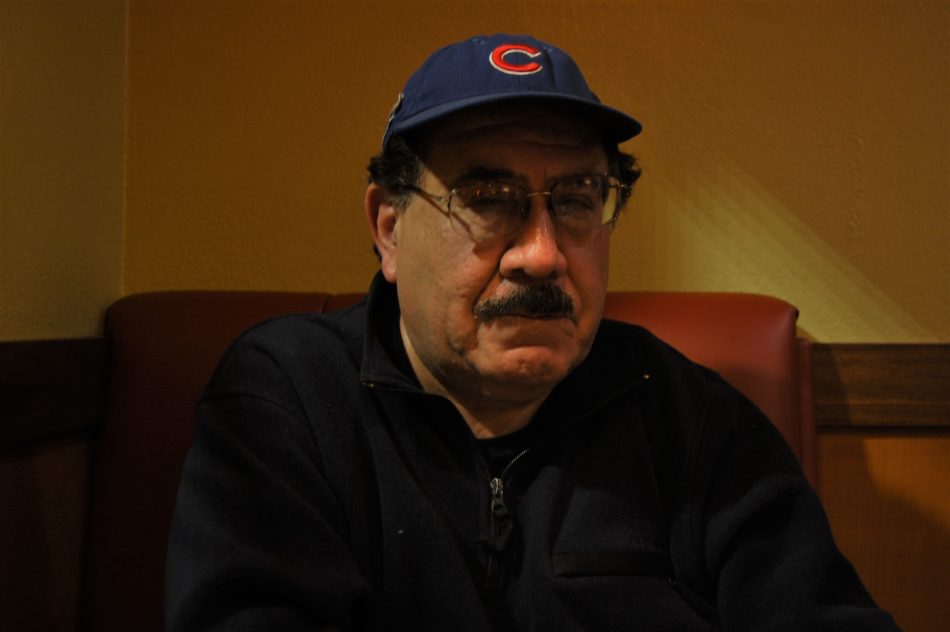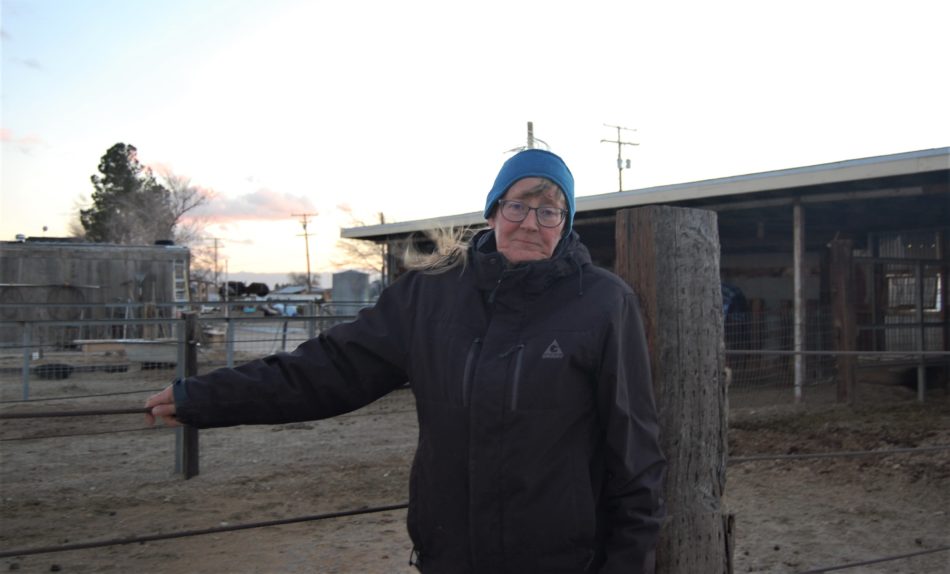Metal polluted air puts Los Angeles residents at risk
In southeast Los Angeles, metal processing facilities emit toxic steam next to homes, schools and parks. And low-income residents are paying the price. Hannah Hagemann sits down with activists, scientists and regulators to investigate. Illustration by Amy Koehler.

Illustration: Amy Koehler
In the city of Maywood, California, no home is further than half a mile away from heavy industry. Felipe Aguirre, a 25-year resident of the city and its former mayor, drives past Heliotrope elementary school. Just a block later, he waves at an unassuming one-story building that makes electronic parts. “Steam is coming out of here six nights a week,” Aguirre says.
This isn’t the same benign steam that rises from fresh pasta — it’s scalding water vapor laced with heavy metals, including hexavalent chromium.
We drive down East 52nd Place past the grassy Maywood Park and infinite rows of densely packed homes adjacent to metal foundries and chemical plants. Aguirre points out the remnants of one of Maywood’s most infamous disasters, a chemical fire that erupted from an e-waste recycling plant in 2016, then spread into backyards and burned down homes. The plant now sits vacant, scarred with black spots where fire licked the ground.
The sky turns hot pink and orange and the remaining light is fading fast. Some of the same pollutants that put Maywood in the 98th percentile for cancer risk in the state create beautiful sunsets.
The Office of Environment Health Hazard Assessment ranks Maywood in the 97th percentile for toxic releases — pollutants spewed into the air, such as the metal-laden steam that comes out of the electronic parts factory. In the same assessment, the office reported that 60 percent of land in the southeast L.A. district, encompassing Maywood and its neighbors, Commerce and Vernon, is used for industrial purposes. Just nine percent of the land in those three cities is residential. Ninety-six percent of Maywood residents are Latinx and the city’s poverty rate is in the 87th percentile for California.
In Maywood, heavy industry crowds the same blocks residents live on — next door to schools, parks, restaurants and neighborhoods. These businesses operate in cities already grappling with deep-rooted inequity — often their residents are low-income, people of color. Maywood exemplifies a major problem in California: when regulators permit how many pounds of toxics each polluter can release into the air, they look at each facility individually, without acknowledging that multiple emitting facilities clustered together creates cumulative and severe health impacts for nearby residents.
No one is measuring the total amount of pollution released into the air in cities like Maywood that have a high concentration of heavy industry. As a result, residents suffer devastating health effects such as cancer from breathing in daily doses of metals and other toxics.
Now, Aguirre and other environmental, health and justice activists are trying to get the state to act by forcing heavy industry to stop emitting toxics into the air.
No safe level of exposure
Aguirre’s fight for clean air begins with a chemical called hexavalent chromium, or hex chrome. It’s released into the air through chrome plating — a process used to create a stainless-steel look and protect metal parts from corrosion. It works like this: metal parts are placed in an electrically charged bath of salts and chromium. An electric current runs through the bath, causing chromium to deposit on the metal. But the process also generates a waste gas called hexavalent chromium, which rises out of the bath and into the air.
Cutlery, sink faucets, chrome bumpers and even the engine of NASA spaceships look shiny and sleek because of the chrome plating process, which is used by metal foundries, welding shops, specialty automobile and aerospace parts manufacturers. The nuts and bolts that hold cell phones and televisions together are often plated with chrome, too. High-temperature metal welding and grinding also produce hex chrome fumes that raft onto dust particles.
Hex chrome exposure is linked to lung and nasal cancers, neurodevelopmental disorders, asthma, infertility, and kidney and liver damage. A 2017 EPA report on hex chrome published stated that “Hexavalent chromium is highly toxic, even at low mass concentrations and emissions.” In a 2006 report, the California Air Resources Board ranked hexavalent chromium as the second most potent human carcinogen.
That report declared that employees at chrome plating facilities were at risk of developing cancer due to hex chrome exposure. Regulators found in that same report that 43 percent of plating facilities were located within a half miles of residential areas, often schools.
43 percent of plating facilities were located within a half miles of residential areas, often schools.
The report maintains that hex chrome does not cause cancer in communities surrounding chrome plating plants. But more recent research shows communities who breathe in hex chrome polluted air face higher risks for health issues.
In 2015, UC San Francisco researchers reported that pregnant women in Willits, California who were exposed to hex chrome emissions from a factory had babies with elevated levels of birth defects, including cleft lips and nervous system and chromosomal disorders. Compared to women who weren’t exposed to hex chrome, these women also had higher levels of miscarriages and premature births. Hex chrome and other carcinogenic metals can cross the blood-brain barrier and may be passed down through DNA from parent to child.
“We don’t think there’s a safe level of exposure to carcinogens,” says Amy Kyle, an emeritus researcher and professor of public health at UC Berkeley.
Kyle also points outs that when regulators permit facilities to release toxics into the air, they’re relying on health studies that estimate residents’ exposure to the pollution over a lifetime.
But Kyle says that even short-term exposures could harm children: “During critical periods of development, health effects could occur from much lower net doses.”
Jane Williams, an air pollution expert and executive director of the environmental group California Communities Against Toxics, has documented what she calls the effects of hex chrome and other heavy metals in communities. She began her work on airborne metal contamination in Paramount, a town 10 miles away from Maywood. In 2013 Williams got a call from Paramount community members concerned with how many children at Lincoln Elementary, located hundreds of feet away from several metal processing facilities, were being diagnosed with cancer. So Williams and her team investigated, taking hair samples from residents of all ages.
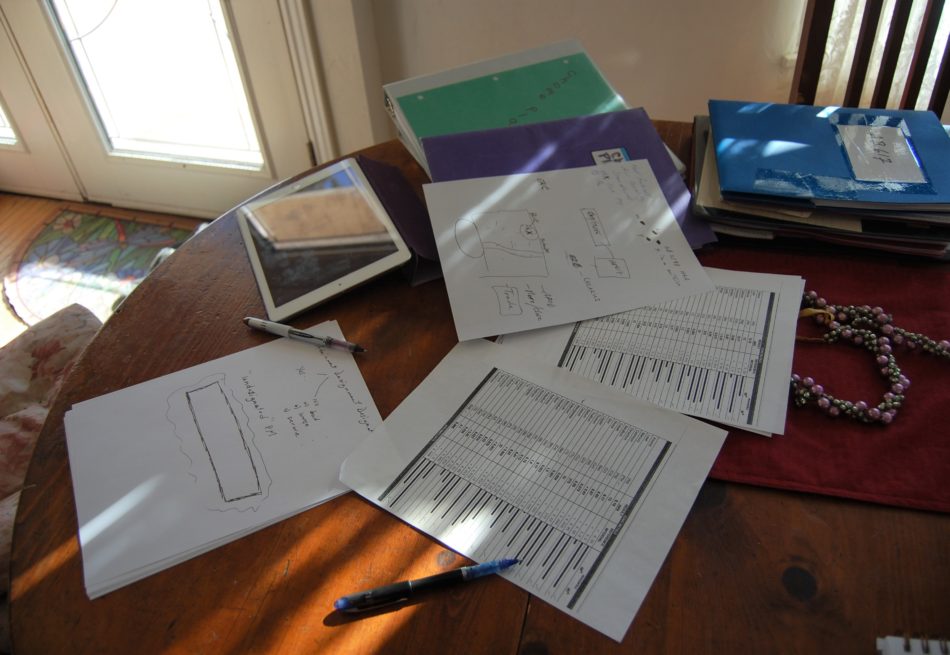
Remnants of Jane Williams’s metal investigation in Los Angeles cities: binders, handwritten notes, and sample results.
What Williams found startled her: she saw alarmingly high levels of metal contamination in children. One two-year-old girl had the same levels of arsenic, uranium, beryllium and titanium in her hair as adult industrial workers. She thinks the high levels of metal in Paramount are to blame: “When I have a two-year old and she looks like she’s working in a metal smelter, that’s a problem,” Williams says.
“When I have a two-year old and she looks like she’s working in a metal smelter, that’s a problem,” Williams says.
Williams worked with expert geologists and toxicologists to discover the source of the high rates of metals in Paramount’s children. They tested metal levels in residents’ homes and yards, and found titanium, nickel, beryllium and aluminum in soil and dust. In 2014, she took the data to the South Coast Air Quality Management District, who regulates air quality in Los Angeles County. The agency was so alarmed by the data that they installed metal monitors in residential areas adjacent to heavy industry to track the air quality in Paramount. There, they detected high levels of hex chrome and nickel.
The results surprised both Williams and regulators. In California, business must apply for permits that allow them to release hex chrome into the air. They’re also required to annually give local regulators an estimate of how many pounds of hex chrome they emit. But there were too few permitted hex chrome emitters in Paramount to account for the high levels of metal contamination detected there. So, Williams and her team combed through maps, the Yellow Pages and even Yelp to identify all of the business in Paramount that might generate airborne hex chrome by welding, grinding or plating. Then, Williams checked which of these businesses were already reporting emissions and which weren’t. By triangulating these business addresses with the air monitoring data, Williams identified 100 businesses who were likely emitting hex chrome into the air illegally.
In December 2017, Williams revealed her findings to regulators. They responded by creating one of the most comprehensive hexavalent chromium monitoring programs in the U.S. Regulators inspected companies in Paramount to determine which ones were emitting hex chrome. Then, they sampled contamination levels around the city by installing hex chrome monitors and setting out glass to collect hex chrome dust. They found that some companies were grinding chromium outside — which was perfectly legal at the time — releasing hex chrome directly into the air. Regulators also found hex chrome levels at the Lincoln Elementary playground that were 26 times higher than the legally acceptable background limit.
At the urging of the community, Williams, and California Communities Against Toxics, the District passed the first rule banning outdoor metal grinding operations. The rule required facilities to bring grinding inside.
Although hex chrome levels decreased a result, higher-than-average concentrations of the metal in Paramount’s air persist. Williams thinks that’s because regulators still haven’t forced hex chrome emitting facilities to completely seal off their emissions: they can still operate without using an air filter, and with windows and doors open. She’s still trying to convince the South Coast Air Quality Management District to implement zero emission rules in Paramount.
Taking on a toxic burden
Williams’s investigation in Paramount exposed that people who live near multiple metal emitting facilities face disproportionate health impacts. In other cities like Maywood, how much hex chrome, and other carcinogenic metals like nickel and beryllium are spewed into the air remains unknown.
The federal Occupational Health and Safety Administration requires chroming facilities to measure how much hex chrome their workers are breathing in. But there is no state-wide emission limit based on how much hex chrome a resident can breathe in over time without suffering health problems. Chrome plating facilities must keep the level of hex chrome inside their buildings below a limit, but the amount of hex chrome facilities can emit into the air varies widely across the state.
The EPA’s Clean Air Act sets health-based emissions standards for nitrogen dioxide, sulfur dioxide, carbon monoxide, particulate matter, ozone and lead. So the California Air Resources Board and local air districts are required to monitor these six pollutants. State law doesn’t require regulators to measure carcinogenic metals other than lead, such as hex chrome, nickel and beryllium in the air. This is true even in places such as Maywood, where chrome platers operate next door to schools and homes.
And regulating one business at a time misses the cumulative impact that can occur when a city has a high concentration of emitters. Amy Kyle says that’s a flawed approach, similar to designing a bridge that is only strong enough to support one car at a time. “You wouldn’t build a bridge and assume only one car will drive on it. It’s the same thing assuming any one person is exposed to just one toxic source in these neighborhoods.”
Lawmakers seem to recognize that cumulative exposures to toxics is a problem: in 2018, the state legislature passed a bill called AB-617 that aims to reduce neighborhood-level air pollution emissions in ten of the most contaminated areas in the state. Andrea Polidori, who manages the monitoring programs for the South Coast Air Quality District, says the bill was a “direct result” of the hex chrome monitoring effort that Williams and the South Coast Air Quality Management led in Paramount.
But Williams says regulators aren’t on track to fulfill a promise of reducing air pollution. Funding from the bill isn’t being put toward investing in zero emission technology, like HEPA filters, that would eliminate hex chrome emissions from escaping into surrounding communities. And she wants state regulators to use more stringent methods to monitor metal levels.
But the California Air Resources Board and industry groups are resisting Williams’ efforts. Brian Leiker, who heads the Metal Finishing Association of Southern California, says chrome platers “have to comply with some of the toughest regulations in the world – we’ve reduced hex chrome substantially over the last 20 years.” He’s concerned that hex chrome monitoring wouldn’t accurately capture where emissions are coming from, so one business could be at fault for another business who’s emitting hex chrome across the street.
“It’s challenging to have one facility be responsible for another facility’s emissions,” agrees Richard Kreiger, a manager with the risk reduction branch at the California Air Resources Board. “I don’t know if that’s something we have figured out.”
But Williams and the residents of cities such as Maywood say that overlooks their reality. There are over 200 licensed chrome plating facilities in California, many of them next to people’s homes and schools. Low-income residents in these communities don’t have many options.
Still, Felipe Aguirre trusts in Williams’ tenacity to force the state to address the issue of cumulative exposures. He’s known her for over twenty years. “She has the most ability to make change in the state of California for environmental justice, across the board,” he says.
They both will continue to their fights to reshape the way California regulates pollution in communities with disproportionate levels of industry.
“It’s very difficult to tell people that a lot of these problems are because we live next to where their jobs are,” Aguirre explained. “How they live, how they survive, how they contribute to the American economy is killing them, literally.”
Aguirre thinks that regulators need to devise new rules that restrict the total burden of pollution in a city, rather than measuring individual sources of contamination. Until then, chrome platers in Maywood will continue to emit toxic steam, a block away from an elementary school, a preschool, and rows of densely packed homes.
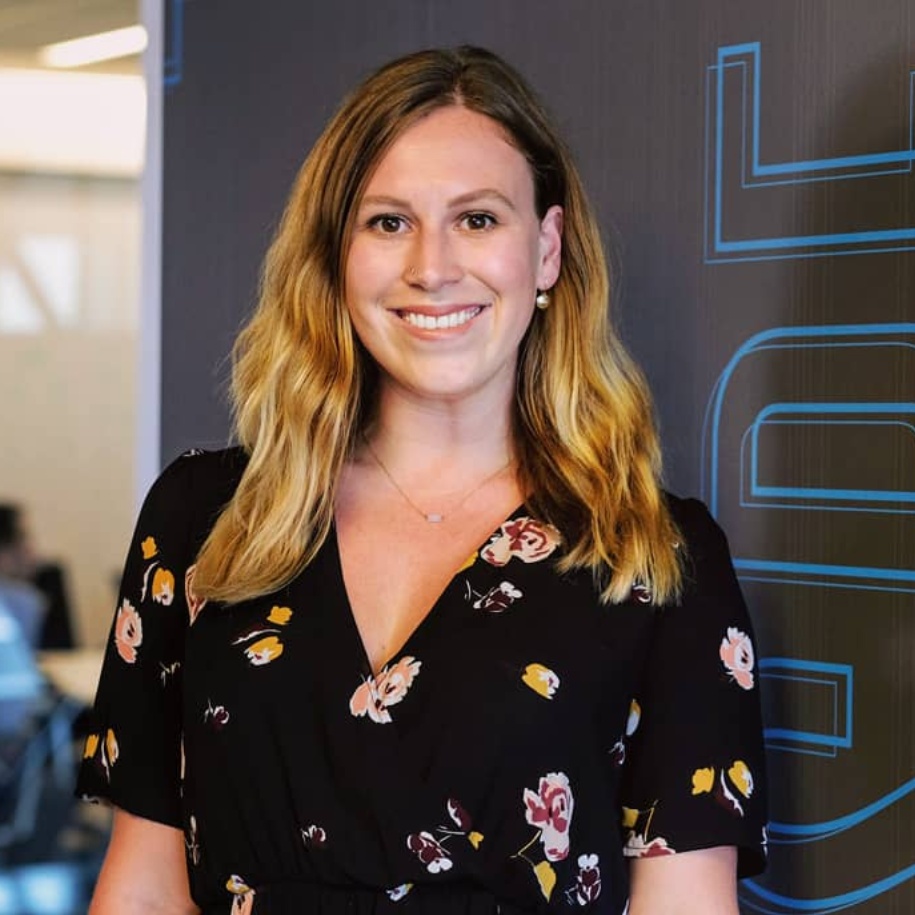
Hannah Hagemann
Author
B.S. ( earth science, environmental geology) University of California, Santa Cruz
Internships: The Monterey Herald, KQED
Fellowships: The Kroc Fellowship, NPR
Before beginning a career in journalism, Hagemann worked as a geologist. She sampled and cleaned up industrial pollution across California with drill crews, railroad foremen and high-level regulators. The work brought Hagemann to remote corners of the Mojave and sprawling air force bases, but most often she was investigating contamination in working-class communities across Los Angeles.
Hannah Hagemann is a 2019 Kroc Fellow at NPR. During her fellowship, she will work at NPR’s National Desk and Weekend Edition.
In July 2019, Hannah was one of the first reporters on the ground covering the mass shooting in Gilroy, California. Hagemann enjoys reporting stories at the intersection of community, policy and science. She has reported on climate change, fishing issues and PFAS chemicals.
In her free time, Hagemann enjoys hiking, skiing, mountain biking and seeing live bluegrass and funk music. She also paints landscapes and writes poetry.
photo credit: Wanyu Zhang/NPR
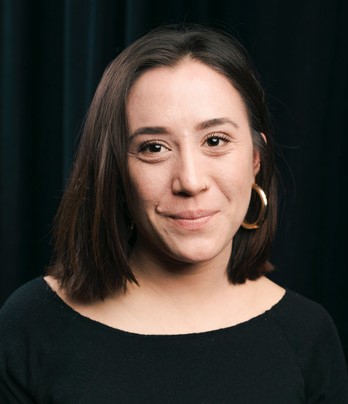
Amy Koehler
Illustrator
B.S. (Zoology)San Francisco State University
Internship: Ink Dwell Studio (Berkeley, California)
Amy Koehler is an artist and illustrator from San Francisco, California. Her childhood exploring the nature of the urban jungle led to her unique appreciation for the intersection of science, art, and culture. Amy’s fascination with the workings of our inner and outer worlds inspires art that reflects upon the collective experience of life. She hopes her work evokes a sense of connection between people and their surroundings.
photo credit: Tracy Martin
